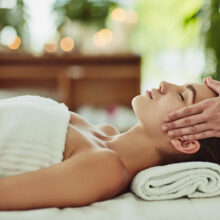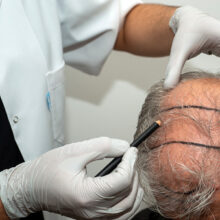Demystifying Sunscreen: How to be Sun Safe All Summer
- Published: Friday, June 5th 2015
- in Beauty
by Kim Kelder, Miraval Lead Aesthetician and Skincare Specialist
Did you know that 78 percent of sun damage is from incidental sun exposure? This means that wearing SPF daily is just as important as wearing it when you are at the pool or the beach. With that in mind, here are several key points about sunscreen that everyone should know in order to truly protect their skin from harmful UV rays.
Types of Sunblock
First and foremost, always make sure to read the label. Even though the FDA has a regulation on sunscreens, you should still ensure that your sunscreen is broad spectrum, meaning that it not only protects against burning UVB rays but also against the aging UVA rays. My two favorite ingredients to look for in sunscreens are Zinc Oxide and Titanium Dioxide, because both are physical blocks. A physical block contains inorganic compounds that are not absorbed into the skin. Light is either absorbed into sunblock material or reflected away from the skin, similar to a mirror or aluminum foil. Ingredients in physical sun blocks protect against both UVA and UVB because they are not absorbed, plus they are non-irritating and non-allergenic. A chemical sunscreen is absorbed by the skin. Chemical sunscreens typically contain a range of ingredients like benzones, aminobenzoic acid, and cinnamates that, together, protect against UVA and UVB.
How to Apply
Make sure to apply the product generously before going outdoors. It takes 15 minutes or so for your skin to absorb sunscreen, so if you wait until you’re already in the sun, your unprotected skin may begin to burn. Apply a water-resistant sun block when swimming and be sure to re-apply every two hours. Also, don’t stop short; apply sunscreen on your neck and decollete area, where most women forget. Avoid the sun during peak hours, generally between 10 a.m. and 3 p.m., which is prime time for exposure to damaging rays. Even on a cloudy day, 80 percent of the sun’s ultraviolet rays pass through the clouds. Wear protective clothing whenever possible.
Choosing the Right SPF
Sunscreen can get so confusing. Did you know that an SPF 30 offers only four percent more protection than an SPF 15, and an SPF 45 offers just two percent more than that? High SPF number sunscreens like an SPF 50 or 100 can give people a false sense of protection. I usually suggest that if you live in the northern part of the U.S. in the winter an SPF 15+ is fine, but in the southern part of the U.S. an SPF 30 year-round is what I recommend.
Extra Sunscreen Protectants
Think about building blocks when it comes to sunscreen. These days you can find and SPF in moisturizers, BB and CC creams, tinted moisturizers, and even make-up. However, for the most part, the sunscreen in makeup is just not enough. If you apply a regular non-SPF moisturizer to the face and then apply make-up with an SPF over it, the sunscreen in the make-up has a difficult time penetrating the skin. Additionally, most people apply makeup sparingly, and so will not get full protection. I highly suggest first applying a sunscreen-based moisturizer directly onto the skin to adequately protect (remember to apply generously). Then, apply foundation makeup with sunscreen or an SPF-infused mineral powder make-up. If you will be in direct sunlight (at the beach, hiking, skiing, or by the pool) you must wear a sunscreen that is made for direct sun exposure.
About Kim Kelder:
Kimberly Kelder is Miraval Resort & Spa’s Lead Aesthetician and Skin Care Specialist with over 18 years of experience—13 of those years at Miraval. After receiving her first facial, she was mesmerized by the way her skin felt and looked. Kim quickly realized that she wanted to learn how to make other people feel as transformed as she did. She studied at Allure College of Beauty in Tucson, Arizona specializing in Aesthetics. Kim gives a weekly skincare lecture at Miraval and educates guests on how to properly care for their skin and how to make skin care a realistic priority in their lives. Kim is most passionate about teaching guests how to have healthy skin in a holistic setting. With so many products and treatments on the market, guests are often confused and overwhelmed. Kim teaches guests how to make the best choice for their skin at any age and during any season. She customizes her skin care recommendations and regimen to suit the guest’s individual lifestyle and demands, to maximize and maintain healthy skin.


